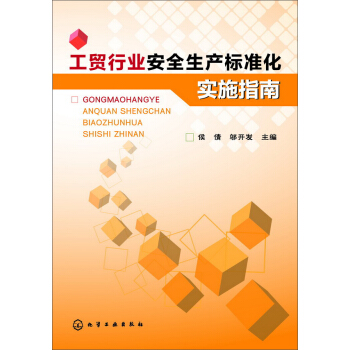![国外生命科学优秀教材:细胞世界(影印版) [The World of the Cell]](https://pic.windowsfront.com/10925709/5398fccfNf31ca4d8.jpg)

具体描述
内容简介
《国外生命科学优秀教材:细胞世界(影印版)》由美国威斯康星大学、密歇根大学4位教授合作编写,在世界上享有盛誉,是细胞生物学学科经典教材之一。《细胞世界(影印版)》在专业教材销售排行榜长期名列前茅,读者评价较高,并被许多北美、欧洲高校教学选用。《国外生命科学优秀教材:细胞世界(影印版)》编写内容全面、理念先进,并具有鲜明的教学使用特色——适当的深度与简明性、艺术化教学、多层次解答问题、力求精准的概念阐述、为提高教学与学习效率而设计的诸多辅助学习内容。第七版主要内容涵盖:生物信息、生物能、代谢、酶动力学、热力学、细胞膜、细胞信号、代谢调控、转录与翻译、信号传导、DNA复制与重组。第七版新增了RNA干扰、新兴的分子生物技术、一些领域的前沿进展等内容。
《国外生命科学优秀教材:细胞世界(影印版)》适合生命科学相关专业教学选用,也可供从业人员参考使用。
作者简介
Wayne M. Becker,taught cell biology at theUniversity of Wisconsin-Madison, for 30 yearsuntil his recent retirement. His interest in text-book writing grew out of notes, outlines, andproblem sets that he assembled for his students,culminating in Energy and the Living Cell,a paperback text on bioenergetics published in1977, and The World of the Cell, the first editionof which appeared in 1986. He earned all hisdegrees at the University of Wisconsin-Madison. All threedegrees are in biochemistry, an orientation that is readily dis-cernible in his textbooks. His research interests have been in plantmolectflar biology, focused specifically on the regulation of theexpression of genes that encode enzymes of the photorespiratorypathway. His interests in teaching, learning, and research havetaken him on sabbatical leaves at Harvard University, EdinburghUniversity, the University of Indonesia, the University of PuertoRico, Canterbury University in Christchurch, New Zaland,the Chinese University of Hong Kong, and the Charles Universityin Prague. His honors include a Chancellor's Award for Distin-guished Teaching, Guggenheim and Fulbright Fellowships, and aVisiting Scholar Award from the Royal Society of London.Lewis J.Kleinsmith,is an ArthurE Thurnau Professor Emeritus of Molecular,Cellular, and Developmental biology at theUniversity of Michigan, where he has servedon the faculty since receiving his Ph.D. fromRockefeller University in 1968. His teachingexperiences have involved courses in intro-ductory biology, cell biology, and cancerbiology, and his research interests haveincluded studies of growth control in cancer cells, the role of protein phosphorylation in eukaryotic gene regulation, andthe control of gene expression during development. Amonghis numerous publications, he is the author of Principles ofCancer Biology as well as several award-winning educationalsoftware programs. His hnors include a Guggenheim Fel-lowship, the Henry Russell Award, a Michigan DistinguishedService Award, citations for outstanding teaching from theMichigan Students Association, an NIH Plain LanguageAward, and a Best Curriculum Innovation Award from the EDUCOM Higher ,Education Software Awards Competition.
Jeff Hardin is a Professor in theZoology Department at the University ofWisconsin-Madison. His research interestscenter on how cells migrate and adhere toone another to change the shape of animalembryos. Dr. Hardin's teaching is enhancedby his extensive use of videomicroscopy andhis Web-based teaching materials, which areused on many campuses in the UnitedStates and other countries. As part of his interest in teachingbiology, Dr. Hardin has been involved in several teachinginitiatives. He was a founding member of the University of Wisconsin Teaching Academy and a cofounder of a Univer-sity of Wisconsin system-wide instructional technologyinitiative known as BioWeb. He is currently faculty directorof the Biology Core Curriculum, a four-semester honorsbiology sequence for undergraduates. His teaching awardsinclude a Lily Teaching Fellowship and a National ScienceFoundation Young Investigator Award. He is also on theeditorial board of CBE: Life Sciences Education.
内页插图
目录
About the Authors iiiPreface v
Acknowledgments
Detailed Contents xv
1 A Preview of the Cell
2 The Chemistry of the Cell
3 The Macromolecules of the Cell
4 Cells and Organelles
5 Bioenergetics: The Flow of Energy in the Cell
6 Enzymes: The Catalysts of Life
7 Membranes: Their Structure, Function,and Chemistry
8 Transport Across Membranes:Overcoming the Permeability Barrier
9 Chemotrophic Energy Metabolism:Glycolysis and Fermentation zz
10 Chemotrophic Energy Metabolism Aerobic Respiration
11 Phototrophic Energy Metabolism:Photosynthesis
12 The Endomembrane System and Peroxisomes
13 Signal Transduction Mechanisms: I. Electrical and Synaptic Signaling in Neurons
14 Signal Transduction Mechanisms: II. Messengers and Receptors
15 Cytoskeletal Systems
16 Cellular Movement: Motility and Contractility
17 Beyond the Cell: Cell Adhesions, Cell Junctions, and Extracellular Structures 480
18 The Structural Basis of Cellular Information: DNA, Chromosomes, and the Nucleus
19 The Cell Cycle, DNA Replication, and Mitosis
20 Sexual Reproduction, Meiosis, and Genetic Recombination 600
21 Gene Expression: I. The Genetic Code and Transcription
22 Gene Expression: II. Protein Synthesis and Sorting
23 The Regulation of Gene Expression
24 Cancer Cells
Appendix: Visualizing Cells and Molecules Glossary
Photo, Illustration, and Text Credits
Index
前言/序言
用户评价
阅读过程中,我最大的感受是这本书所传达的严谨与深度。虽然它力求通俗易懂,但在科学内容的准确性和权威性方面却丝毫没有妥协。每一个概念的引入,每一个理论的阐述,都建立在坚实的科学研究基础之上。那些参考文献和术语注释,也让我看到了作者们为了保证内容的可靠性所付出的努力。当我遇到一些更加深入的讨论,比如细胞信号转导的复杂网络,或者基因调控的精妙机制时,我能感受到其中蕴含的科学智慧和研究的深度。即使有些地方的专业性很强,但作者们总能通过循序渐进的方式,带领我逐步理解。这让我意识到,生命科学并非简单的知识堆砌,而是一个充满逻辑和探索的学科。这本书就像一个经验丰富的向导,引领着我在知识的海洋中探索,不迷失方向,并且能够领略到深海的壮丽。
评分这本书给我的最大惊喜在于它对细胞功能的阐释方式。它不是简单地列举细胞器的名称和功能,而是将这些微观的结构置于一个动态的、相互关联的生命过程中去理解。它会详细解析某个生理过程是如何通过不同细胞器的协同作用来完成的,比如能量的产生、物质的合成与运输、信号的传递等等。这些过程的描述就像是一部精心编排的微观芭蕾,每一个细胞器都扮演着不可或缺的角色,它们的配合默契无间,共同维持着生命的运转。我特别欣赏书中对于分子机制的细致描绘,虽然我不是专业人士,但作者们用图示和文字相结合的方式,将复杂的生化反应过程清晰地呈现出来,让我能大致理解细胞内部正在发生的“化学魔法”。这种“由点及面”的教学思路,让我不再将细胞视为一堆孤立的组成部分,而是真正理解了一个有机的、充满活力的生命系统。
评分这本书的整体编排逻辑非常清晰,从宏观到微观,从基本概念到复杂过程,层层递进,结构合理。开篇通常会引入一个大的生命现象或者概念,然后逐步拆解,深入到细胞层面,再进一步解析细胞内的分子机制。这种结构设计使得学习过程非常顺畅,不会感到突兀或混乱。我尤其喜欢书中设置的“关键概念回顾”和“思考题”环节,这些设计极大地帮助我巩固了所学知识,并鼓励我主动思考。当我完成一个章节的学习后,通过回顾这些关键概念,能够快速梳理出本章的核心要点。而那些思考题,虽然不一定需要我立即给出标准答案,但它们的设计能够引导我从不同的角度去理解和分析问题,甚至激发我进一步查找资料,深入探究。这种“学以致用,学中思考”的学习模式,让我的阅读体验更加充实和有收获。
评分这本书的装帧设计相当考究,厚实的封面带着一种沉甸甸的知识感,封面的设计也很是简洁大气,仅仅用一幅描绘细胞结构概念的插画作为点缀,便能瞬间抓住读者眼球。打开书页,纸张的触感温润而略带韧性,即使长时间翻阅也不会感到疲劳。印刷字体清晰,排版疏朗,大量的图表和插图占据了页面的重要位置,这些视觉元素并非简单的装饰,而是精心设计的教学辅助,与文字内容相辅相成,共同构建了一个生动立体的细胞世界。我尤其喜欢其中一些高分辨率的电镜图片,它们仿佛带着我穿越时空,亲身探索微观世界的奇妙构造,那些细胞器的细节,那些生物大分子的精巧排列,都清晰可见,令人赞叹不已。即使我并非专业的生命科学研究者,仅仅是被这本教材的视觉呈现所吸引,也足以激发我对细胞学知识的好奇心。它不仅仅是一本教科书,更像是一本精美的画册,一本浓缩了无数科学探索智慧的艺术品。
评分我一直对生命科学的奥秘充满好奇,但坦白说,许多专业书籍往往因为过于晦涩的理论和生僻的术语而让人望而却步。然而,当我拿起这本《细胞世界》时,我的顾虑瞬间烟消云散。作者们似乎深谙如何将复杂的科学概念转化为易于理解的语言,他们用一种娓娓道来的方式,引导读者一步步深入细胞的内部。每当我遇到一个难以理解的概念,总能在紧随其后的解释和生动的类比中找到豁然开朗的感觉。那些精妙的比喻,将抽象的分子机制具象化,比如将细胞膜比作一个繁忙的港口,将细胞核比作信息中心,这些形象化的描述极大地降低了学习门槛。而且,书中并非一味地堆砌理论,而是将理论与实际研究紧密结合,穿插了许多历史性的发现和前沿的科学动态,让我在学习知识的同时,也感受到了科学探索的魅力和科学精神的力量。
相关图书
本站所有内容均为互联网搜索引擎提供的公开搜索信息,本站不存储任何数据与内容,任何内容与数据均与本站无关,如有需要请联系相关搜索引擎包括但不限于百度,google,bing,sogou 等
© 2025 book.coffeedeals.club All Rights Reserved. 静流书站 版权所有

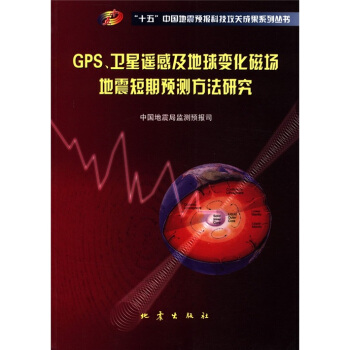

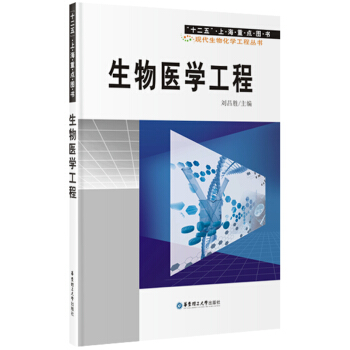
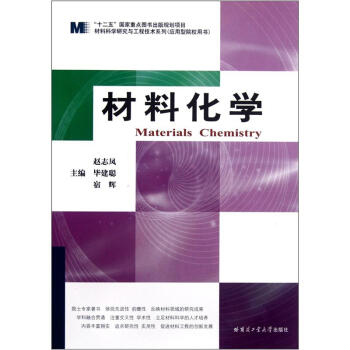

![固态磁性导论 [Magnetism in the Solid State An Introduction] pdf epub mobi 电子书 下载](https://pic.windowsfront.com/11142976/rBEHZVDH9-YIAAAAAAe_uh8RmIUAADO5gJh8TUAB7_S314.jpg)





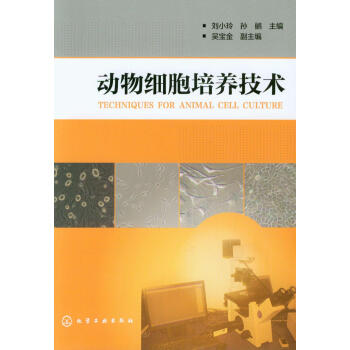
![沉积盆地分析基础/普通高等教育“十一五”国家级规划教材 [Principles of Sedimentary Basin Analysis] pdf epub mobi 电子书 下载](https://pic.windowsfront.com/11365290/rBEhWlKiuaAIAAAAAA2BAdiv31gAAGdvwMN2pYADYEZ348.jpg)
![高分辨率微波成像 [High Resolution Microwave Imaging] pdf epub mobi 电子书 下载](https://pic.windowsfront.com/11388018/rBEhU1LoXZcIAAAAAAJTbOxyyQQAAIRSQIkEgkAAlOE746.jpg)
![全球气候变化谈判历程与焦点 [The Focuses and Process of Global Climate Change Negotiations] pdf epub mobi 电子书 下载](https://pic.windowsfront.com/11393377/rBEhUlLoXaIIAAAAAAIiIx-tM9AAAIRSgCjj5UAAiI7429.jpg)

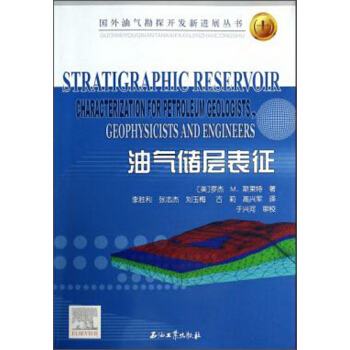

![塞伯格-威顿方程及其在光滑四流形拓扑中的应用(英文版) [The Seiberg-Witten Equations and Applications to the Topology of Smooth Four-Manifolds] pdf epub mobi 电子书 下载](https://pic.windowsfront.com/11419294/rBEhVVMfqukIAAAAAAI7VIsuBrcAAKAVgE0p_EAAjts223.jpg)
